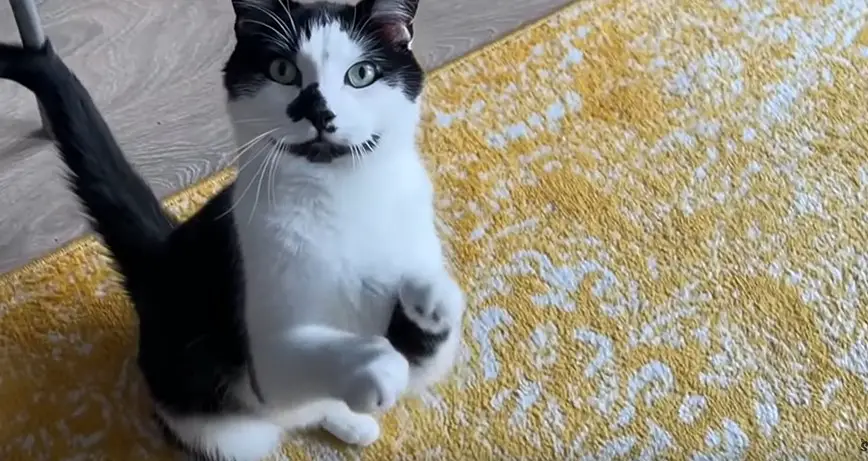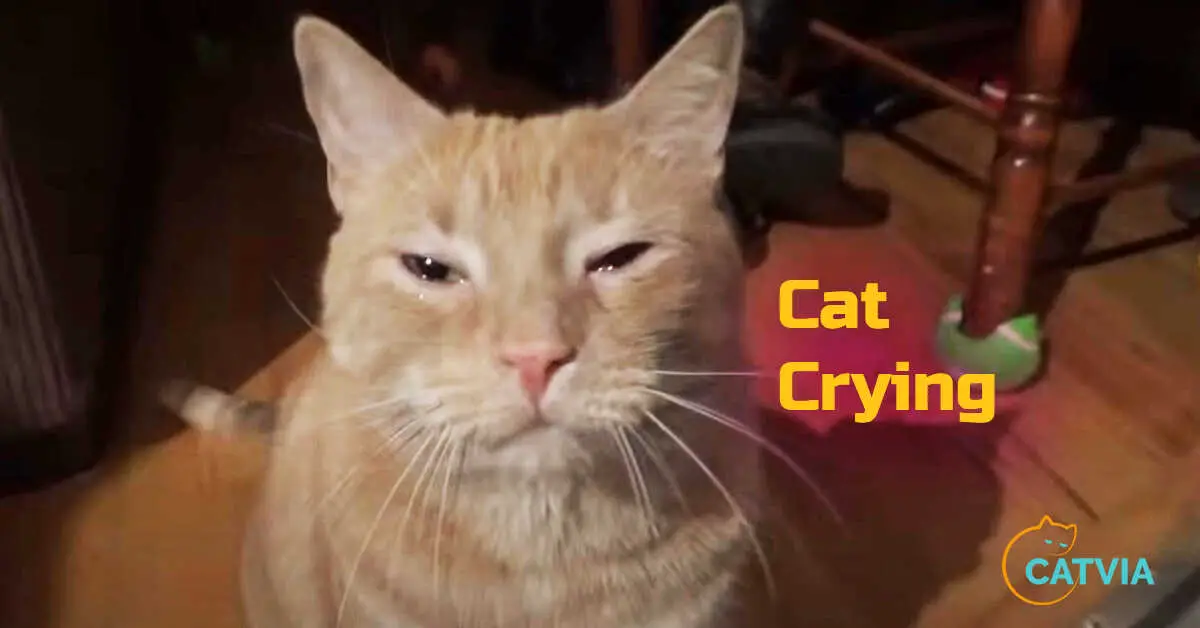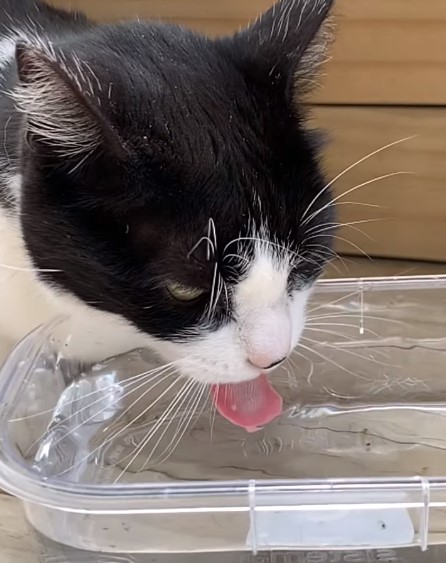Yes, cats do smile when they are happy. It’s a natural reaction to happiness, just like humans. When a cat is content and enjoying life, you’ll see it in their expressions.
A happy cat will have bright eyes, a relaxed body, and a soft smile.
Do Cats Smile, Laugh, Or Grin When They Are Happy?
There’s no denying that cats are one of the most popular pets in the world. They’re independent, low-maintenance, and generally easy to care for. But one of the things that makes them so special is their mysterious nature.
One question that has long baffled cat owners is whether or not cats smile when they are happy. While it’s true that cats don’t physically smile like humans do, they can express happiness in other ways.

For example, you may see your cat’s eyes widen when they’re content or relaxed. Their pupils may also dilate and their tails may start to slowly wave back and forth.
There are a lot of photos of cats online that show them with their mouths open and teeth exposed.
A study published in the journal Animal Cognition found that domestic cats (Felis catus) will often expose their teeth—known as “flehmen”—when they encounter something pleasant, like a tasty treat.
So if you see your cat looking like they’re smiling at you, it could be a sign that they’re content and enjoying your company. So go ahead and give them a good petting—they deserve it!
Also Read: How To Do Friendship With A Kitten?
How Can You Tell When a Cat is Happy?
There are a few key ways to tell when your cat is happy.
One is that they will purr frequently when they’re content.
Another is that they will have a relaxed body posture and might even appear sleepy. They will also show you their belly as a sign of trust.
Lastly, cats enjoy spending time with their humans, so if your kitty seems particularly affectionate, it’s a good indication that they’re happy.
How Do You Know When a Cat is Smiling?
A cat’s smile is often a sign of contentment. It can also indicate that the cat is feeling playful or friendly.
Often, a cat will smile when being petted or when receiving attention from its owner.
Also Read: Why My Cat Meows for No Reason?
Do Cats Smile to Show Happiness?
There are some behaviors that suggest that cats may indeed smile when they’re happy. For example, a cat who is purring or meowing contentedly is often thought to be smiling.
Additionally, many cat owners report that their feline friends seem to grin when they’re being petted or given treats.
So, while we can’t say for sure whether or not cats smile to show happiness, it’s certainly possible that they do! If you think your cat is smiling at you, it’s probably a good sign that they’re feeling content and loved – so keep up the good work!
Why Do Cats Smile When They Sleep?
If you’ve ever looked at your sleeping cat and wondered why they seem to be smiling, you’re not alone. There are a few theories as to why cats may smile while they sleep.
One theory is that it’s simply a relaxed facial expression. When cats are content and comfortable, their muscles relax and their faces take on a softer, more serene appearance – which can sometimes resemble a smile.
Another theory is that cats may smile in their sleep because they’re having pleasant dreams. Just like humans, animals can dream, and it’s thought that the same parts of the brain are active during both human and animal dreaming.
So if your cat is smiling in their sleep, they may be experiencing happy dreams about chasing prey or cuddling with you.
Whatever the reason for your cat’s sleepy smile, it’s clear that they feel content and safe when snoozing – which is always good news for pet parents!
How to Make a Cat Happy?
Creating a happy and fulfilling life for your cat involves meeting their physical, mental, and emotional needs. Here’s a detailed guide on how to make your cat happy:
1. Provide a Balanced Diet
Ensuring your cat has a nutritious and well-balanced diet is fundamental to their overall well-being. Consult with your veterinarian to determine the appropriate type and amount of food based on factors such as age, weight, and health condition. Fresh water should always be available.
2. Create a Safe and Comfortable Environment
Cats thrive in environments that make them feel secure. Provide cozy beds, scratching posts, and hiding spots. Make sure there are elevated areas where they can perch and observe their surroundings. Cats appreciate having a quiet place to retreat when they need some alone time.
3. Regular Veterinary Check-ups
Schedule regular veterinary visits to monitor your cat’s health. Vaccinations, parasite control, and dental care are crucial aspects of preventive healthcare. Addressing health issues promptly ensures your cat’s happiness and longevity.
4. Stimulating Toys and Playtime
Cats are natural hunters and need mental and physical stimulation. Offer a variety of toys that mimic prey, encouraging your cat to engage in interactive play. Spend time playing with your cat using toys like feather wands or laser pointers. Rotate toys to keep their interest.
5. Enriching the Environment
Cats enjoy exploring and interacting with their environment. Introduce new stimuli like puzzle feeders, climbing structures, and window perches. Consider setting up a “cat TV” by placing bird feeders outside a window for entertainment.
6. Grooming and Hygiene
Regular grooming not only keeps your cat’s coat healthy but also strengthens your bond. Brushing helps prevent hairballs, and maintaining proper hygiene by keeping the litter box clean contributes to their overall comfort.
7. Respect Their Independence
Cats are independent creatures and appreciate having control over their surroundings. Allow them to initiate interactions, and respect their need for personal space. Avoid forcing physical contact; instead, let your cat come to you when they feel comfortable.
8. Litter Box Maintenance
Keep the litter box clean by scooping it daily and providing a litter type your cat prefers. The right location and cleanliness are crucial for promoting good litter box habits and preventing stress.
Also Read: How to Clean a House That Had Cats?
9. Scratching Opportunities
Scratching is a natural behavior for cats that helps them maintain healthy claws, mark territory, and stretch. Provide scratching posts and pads made from materials your cat enjoys. Use positive reinforcement when they use these designated areas.
10. Regular Exercise
Cats need regular exercise to maintain a healthy weight and mental well-being. Interactive play, laser pointers, and puzzle toys that dispense treats are excellent ways to keep your cat physically active.
11. Social Interaction
Cats are social animals and benefit from positive interactions with their owners. Spend quality time petting, talking to, and engaging with your cat. If you have more than one cat, ensure they have opportunities to interact positively, and monitor for any signs of conflict.
12. Provide a Variety of Textures and Surfaces
Cats enjoy different textures under their paws. Offer a variety of surfaces such as carpet, soft blankets, and cat trees to satisfy their tactile preferences.
13. Routine and Predictability
Cats thrive on routine. Establish a consistent feeding schedule, playtime, and grooming routine. Predictability helps cats feel secure and reduces stress.
14. Safe Outdoor Exploration
If safe and appropriate for your environment, consider allowing supervised outdoor exploration. Use a harness and leash or provide a secure outdoor enclosure to let your cat experience the sights, sounds, and smells of the outdoors.
15. Monitoring Stress and Anxiety
Be attentive to signs of stress or anxiety, such as changes in behavior, excessive grooming, or hiding. Identify and address stressors, which could include changes in the household, new pets, or unfamiliar noises.
Conclusion
Ensuring the happiness of your cat involves a holistic approach that encompasses their physical health, mental stimulation, and emotional well-being.
By providing a loving and enriched environment, meeting their basic needs, and respecting their individual preferences, you can create a life for your cat that is not only happy but also fulfilling.
Regular veterinary care, a balanced diet, and meaningful interactions contribute to a long and joyful companionship with your feline friend.
His professional interests include humane education, ethics, small animal behavior, and veterinary. As a pet lover from school life, having grown up with two cats and a dog. If he isn’t spending time with his friends and family, Justin enjoys traveling. Learn more about Justin here.


